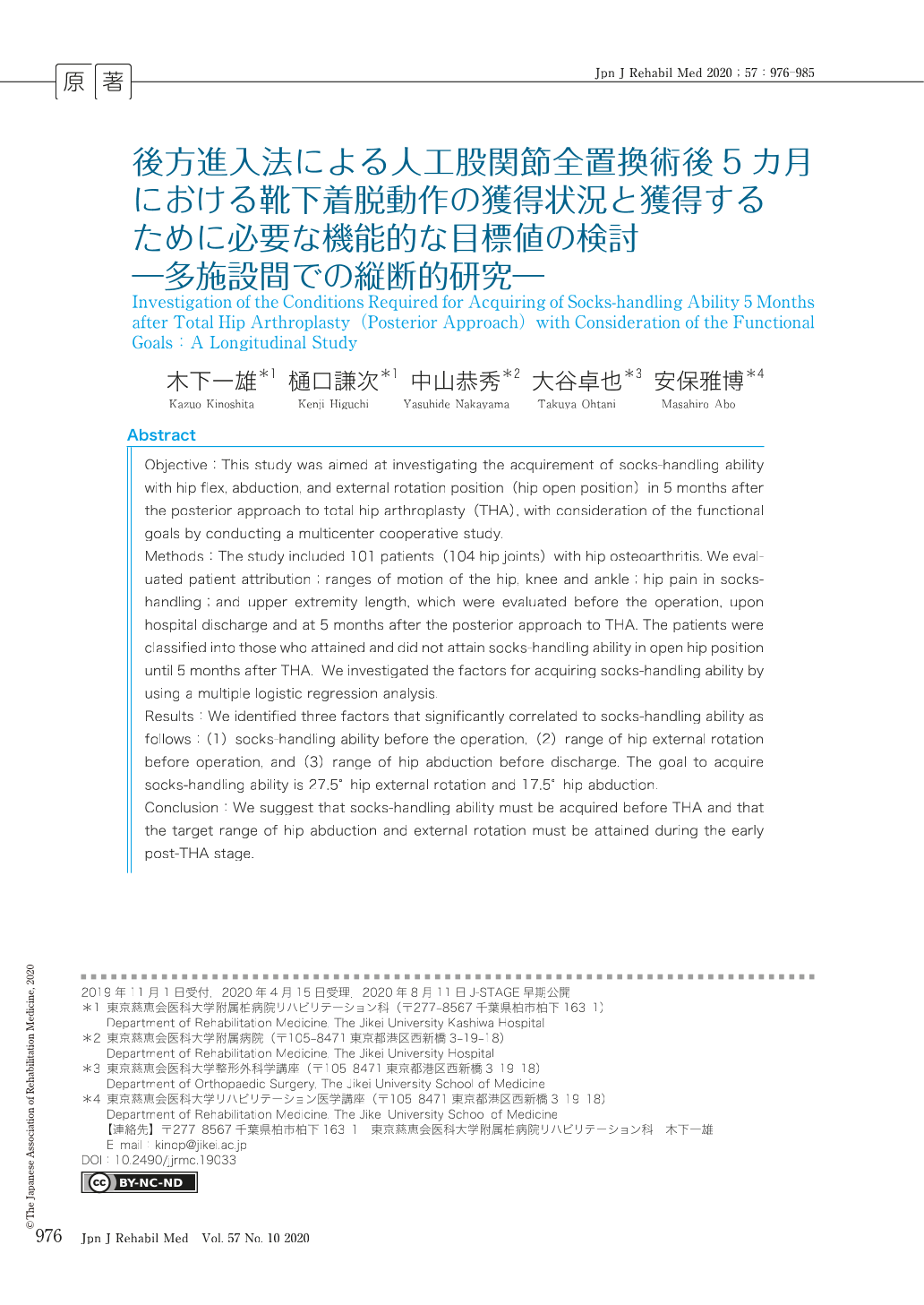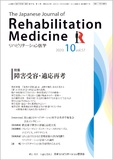Japanese
English
- 販売していません
- Abstract 文献概要
- 1ページ目 Look Inside
- 参考文献 Reference
要旨
目的:本研究の目的は,後方進入法による人工股関節全置換術(THA)を施行し,術後5カ月での股関節屈曲,外転,外旋位における靴下着脱動作(以下,股関節開排法)の獲得状況を調査し,術後5カ月で股関節開排法が可能となるためのリハビリテーション治療の目標値を明らかにすることである.
方法:対象は本学附属4病院で後方進入法THAを施行した変形性股関節症101例104股とした.調査項目は年齢,Body Mass Index,股関節可動域,膝関節と足関節の可動域制限の有無,上肢長,術前および術後5カ月時の股関節開排法の可否とし,術後5カ月での股関節開排法の獲得に関与する因子を検討した.
結果:股関節開排法の獲得に関与する因子として,術前の靴下着脱の可否,術前の股関節外旋可動域,退院時の股関節外転可動域が抽出され,その目標値は股関節外旋可動域27.5°,股関節外転可動域17.5°であった.
結論:股関節開排法による靴下着脱動作を獲得するには,術前から股関節開排法による動作が可能であること,THAの周術期に股関節外旋可動域,股関節外転可動域が目標値に到達していることが必要である.
Objective:This study was aimed at investigating the acquirement of socks-handling ability with hip flex, abduction, and external rotation position (hip open position)in 5 months after the posterior approach to total hip arthroplasty (THA), with consideration of the functional goals by conducting a multicenter cooperative study.
Methods:The study included 101 patients (104 hip joints) with hip osteoarthritis. We evaluated patient attribution;ranges of motion of the hip, knee and ankle;hip pain in socks-handling;and upper extremity length, which were evaluated before the operation, upon hospital discharge and at 5 months after the posterior approach to THA. The patients were classified into those who attained and did not attain socks-handling ability in open hip position until 5 months after THA. We investigated the factors for acquiring socks-handling ability by using a multiple logistic regression analysis.
Results:We identified three factors that significantly correlated to socks-handling ability as follows:(1) socks-handling ability before the operation, (2) range of hip external rotation before operation, and (3) range of hip abduction before discharge. The goal to acquire socks-handling ability is 27.5° hip external rotation and 17.5° hip abduction.
Conclusion:We suggest that socks-handling ability must be acquired before THA and that the target range of hip abduction and external rotation must be attained during the early post-THA stage.

Copyright © 2020, The Japanese Association of Rehabilitation Medicine. All rights reserved.


